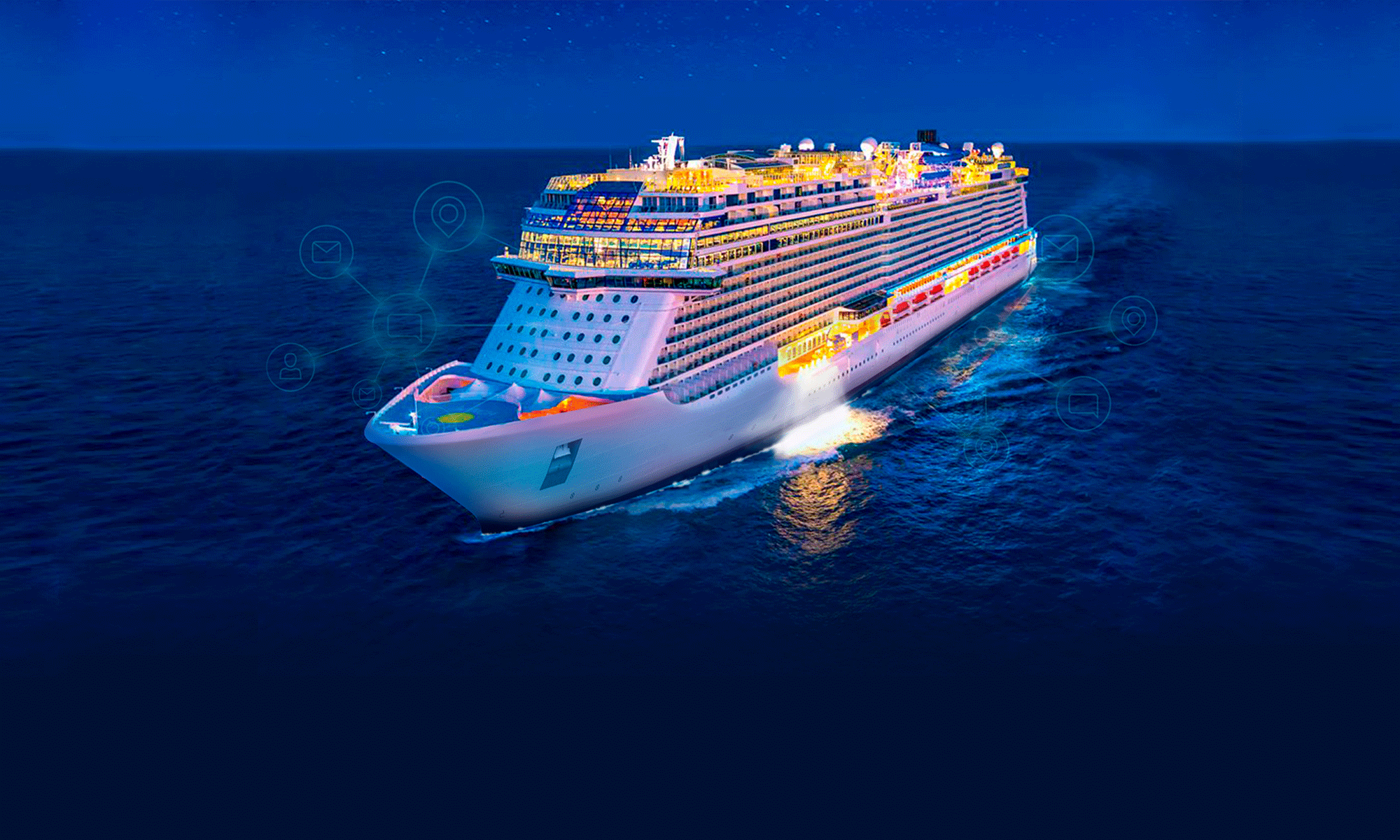Cunard’s magnificent new addition to its line of cruise ships, Queen Anne, has set sail — and she has been a testament to timeless evolution. With the latest communication technologies onboard from NT Maritime, it seamlessly weaves together historic legacy and cutting-edge innovation.
Overview: Cunard Line, a luxury British cruise operator, sought to modernize crew communication systems aboard its newly built flagship vessel, the Queen Anne. With a focus on improving safety, operational efficiency, and the overall guest experience, Cunard partnered with NT Maritime, a leader in communication intelligence and IT solutions, to deploy cutting-edge communication technology.
Challenge: As part of its commitment to enhancing onboard operations, Cunard identified a need to upgrade from outdated digital enhanced cordless telecommunications (DECT) handsets. These handsets lacked the advanced features necessary for effective, real-time communication between officers and crew members on the large-scale vessel. Additionally, there was a need to address power consumption, minimize distractions from non-work-related notifications, and ensure seamless communication utilizing rugged android phones loaded with enterprise applications.
The Queen Anne, a 113,000-ton vessel accommodating nearly 3,000 guests, required an enterprise-grade solution to meet these communication challenges while ensuring reliable connectivity for both crew and passengers, with special provisions for guests with accessibility needs.
Solution: Cunard partnered with NT Maritime to implement their innovative mobile app, designed to provide a role-based communication platform for the ship’s crew. The solution includes voice calling, push-to-talk, and chat functionality, enabling streamlined coordination of tasks, schedules, and emergency protocols.
Key features of NT Maritime’s solution include:
- Rugged Android devices: Provided to the crew for enhanced durability and usability.
- Local push notification environment: This ensures that crew members receive mission-critical calls and messages onboard without internet.
- Offline communication: Communication remains functional without reliance on satellite or internet connectivity, optimizing performance and energy efficiency on long voyages.
- Integration with Martec’s Safety Monitoring and Control System (SMCS): This integration supports safety operations by relaying emergency alarms and suggesting appropriate procedures for handling incidents.
Furthermore, the app integrates with the ship’s PBX system, allowing crew members to easily communicate with passengers. This system improves accessibility by offering phones with specialized features for guests who are deaf or hard of hearing. Parents can also be given devices to contact childcare services, improving peace of mind during their stay.
Results: With NT Maritime’s system in place, Cunard Line achieved:
- Enhanced crew efficiency: Crew members now have access to a reliable, feature-rich communication platform that allows for quick and efficient handling of both routine and emergency situations.
- Improved guest experience: The seamless communication between crew and guests contributed to a smoother, more enjoyable onboard experience, particularly for guests with children and guests with special needs.
- Reduced operational interruptions: Ensuring communications are uninterrupted by satellite outages, the Queen Anne’s crew can operate effectively throughout its voyages.
- Safety improvements: The integration with Martec’s SMCS helps ensure that the crew is well-prepared to handle emergencies, contributing to a safer environment for both crew and passengers.
Conclusion: Through its partnership with NT Maritime, Cunard Line has successfully equipped the Queen Anne with a state-of-the-art communication system that aligns with its high standards of service and safety. This collaboration not only enhances the operational capabilities of the crew but also supports Cunard’s long-term vision of providing an exceptional guest experience, bridging the gap between tradition and modern innovation.
The Queen Anne, which launched in May 2024, stands as a testament to Cunard’s commitment to integrating advanced technology into its historic legacy of ocean travel.
About NT Maritime
NT Maritime serves as a leading communication intelligence and IT Solutions provider, specializing in the development and operation of mission-critical communications networks. Additionally, it offers Low Earth Orbit Satellite connectivity, location services, contact tracing and access controls, along with cutting-edge telehealth technologies tailored for the global maritime industry.
About Cunard
Cunard is a luxury British cruise line, renowned for creating unforgettable experiences around the world. Cunard has been a leading operator of passenger ships on the North Atlantic since 1840, celebrating an incredible 183 years of operation. The Cunard experience is built on fine dining, hand-selected entertainment and outstanding service. From five-star restaurants and in-suite dining to inspiring guest speakers, the library and film screenings, every detail has been meticulously crafted to make the experience unforgettable. Destinations include Europe, the Caribbean, the Far East and Australia.
There are currently three Cunard ships, Queen Mary 2, Queen Elizabeth and Queen Victoria. The fourth ship, Queen Anne, will enter service in 2024. This investment is part of the company’s ambitious plans for the future of Cunard globally and will be the first time since 1999 that Cunard will have four ships in simultaneous service. Cunard is based at Carnival House in Southampton and has been owned since 1998 by Carnival Corporation & plc (NYSE/LSE: CCL; NYSE:CUK).
